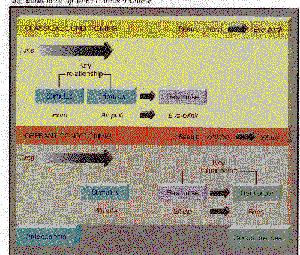
Classical Conditioning
Let go into a bit more detail about what Classical Conditioning is all about. Classical Conditioning basically results from the association of two stimuli inthe environment that work together to create an unconditioned response.

Lets look at Pavlov's example for some incite. BeforeConditioning the meat is an Unconditioned Stimulus, it causes the dogsto salivate, which is theUnconditioned Response. The bell in this case is a Neutral Stimulusbecause it does not cause the dogs to do anything.
During Classical Conditioning the bell is now being used as theConditioned Stimulus, it then triggers the Unconditioned Stimulus,(the meat) which produces the Unconditioned Response. (the salivation)
After Classical Conditioning the bell or ControlledStimulus produces the Conditioned Response which is the salivation.
This may be confusing that one minute the salivation is the unconditionedresponse, and the next it is the conditioned response. The salivation is turnedinto the conditioned response when it is activated by a once neutral stimulus,such as the bell.
When should you employ the Conditioned Response to make it most effective? Well there are a few different times that you can present the conditionedresponse. There is Delay Conditioning, this is what is used in Pavlov'sDogs. (Using Pavlov's dogs as an example) This is when the bell is rung untilthe food is brought to the dogs.
There is also Simultaneous Conditioning, this is when the bell andthe food are brought at the same time.
Then there is Trace Conditioning which is when the the bell comes onthen goes off for a fixed amount of time before the meat was delivered.
These three techniques (Trace, Simultaneous, and Delay) are all presentbefore the Controlled Stimulus, this is Forward Classical Conditioning,there is however Backward Classical Conditioning where the UnconditionedStimulus comes before the Conditioned Stimulus.
As for what works the best, Forward Delay is usually the most effective.
What is Operant Conditioning and how is it different from ClassicalConditioning? Well Operant Conditioning is when a subject learns toassociate its behavior with the consequences or results of the behavior. Thereis positive and negative types of operant conditioning. When the Dog shakes hismasters hand he gets a biscuit. If you work hard and study then you will getgood grades. These are both positive parts of classical conditioning. It isdifferent from Classical Conditioning because it is a learned behavior and not aconditioned response.
